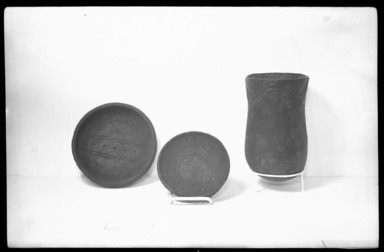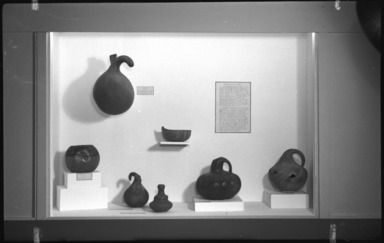

Art Finds a Way, November 01, 1940 through January 10, 1941 (Image: PHO_E1940i020.jpg Brooklyn Museum photograph, 1940)

Art Finds a Way, November 01, 1940 through January 10, 1941 (Image: PHO_E1940i021.jpg Brooklyn Museum photograph, 1940)
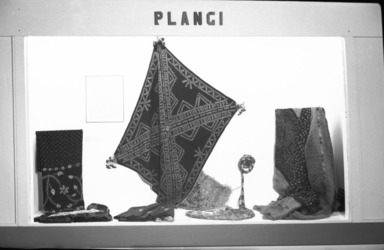
Art Finds a Way, November 01, 1940 through January 10, 1941 (Image: PHO_E1940i022.jpg Brooklyn Museum photograph, 1940)

Art Finds a Way, November 01, 1940 through January 10, 1941 (Image: PHO_E1940i023.jpg Brooklyn Museum photograph, 1940)
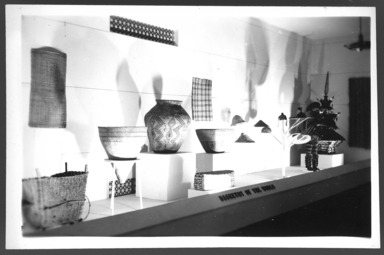
Art Finds a Way, November 01, 1940 through January 10, 1941 (Image: PHO_E1940i024.jpg Brooklyn Museum photograph, 1940)

Art Finds a Way, November 01, 1940 through January 10, 1941 (Image: PHO_E1940i025.jpg Brooklyn Museum photograph, 1940)

Art Finds a Way, November 01, 1940 through January 10, 1941 (Image: PHO_E1940i026.jpg Brooklyn Museum photograph, 1940)

Art Finds a Way, November 01, 1940 through January 10, 1941 (Image: PHO_E1940i027.jpg Brooklyn Museum photograph, 1940)

Art Finds a Way, November 01, 1940 through January 10, 1941 (Image: PHO_E1940i028.jpg Brooklyn Museum photograph, 1940)
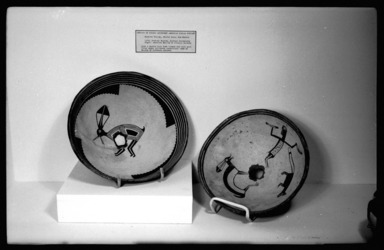
Art Finds a Way, November 01, 1940 through January 10, 1941 (Image: PHO_E1940i029.jpg Brooklyn Museum photograph, 1940)
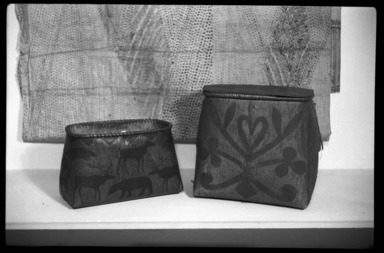
Art Finds a Way, November 01, 1940 through January 10, 1941 (Image: PHO_E1940i030.jpg Brooklyn Museum photograph, 1940)

Art Finds a Way, November 01, 1940 through January 10, 1941 (Image: PHO_E1940i031.jpg Brooklyn Museum photograph, 1940)

Art Finds a Way, November 01, 1940 through January 10, 1941 (Image: PHO_E1940i032.jpg Brooklyn Museum photograph, 1940)
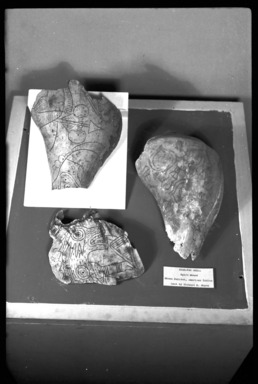
Art Finds a Way, November 01, 1940 through January 10, 1941 (Image: PHO_E1940i033.jpg Brooklyn Museum photograph, 1940)
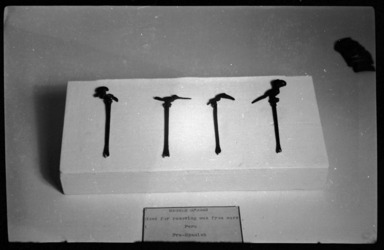
Art Finds a Way, November 01, 1940 through January 10, 1941 (Image: PHO_E1940i034.jpg Brooklyn Museum photograph, 1940)

Art Finds a Way, November 01, 1940 through January 10, 1941 (Image: PHO_E1940i035.jpg Brooklyn Museum photograph, 1940)
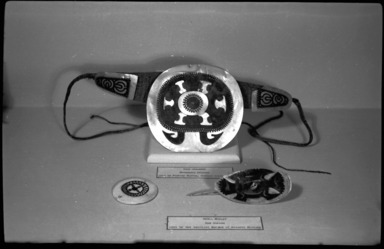
Art Finds a Way, November 01, 1940 through January 10, 1941 (Image: PHO_E1940i036.jpg Brooklyn Museum photograph, 1940)
Art Finds a Way
-
October 31, 1940
How people through the ages made useful objects using highly developed skills and techniques, not yet surpassed by machine processes, is shown in the exhibition “Art Finds a Way” at the Brooklyn Museum, which opens to the public today, after a preview for Museum members and their guests last night (Thursday, October 31). The exhibition will continue through January 2.
All departments of the Museum were drawn on by Dr. Herbert J. Spinden, Curator of American Indian Art and Primitive Cultures, who planned the show, to demonstrate the development of techniques in the past both as examples of extraordinary skills and sources of encouragement to modern craftsmen. Dr. Spinden received cooperation through the lending of objects by the American Museum of Natural History, Mr. Walter C. Arensberg, Miss C. F. Bieber, Mr. Arthur W. Clement, Mr. M. D. C. Crawford, Denver Art Museum, Mrs. Herman de Wetter, Mr. Rene d’Harnoncourt, French & Company, Mr. Albert Gallatin, Mrs. Chauncey J. Hamlin, Los Angeles County Museum of History, Science and Art, Mr. and Mrs. Samuel K. Lothrop, Mrs. Elsie McDougall, Metropolitan Museum of Art, Mr. Richard K. Meyer, Mrs. Dwight W. Morrow, Museum of Northern Arizona, New York Historical Society, Peabody Museum at Harvard University, Pueblo Grande at Phoenix, Arizona, Mr. Patrick Putnam, San Diego Museum, Mrs. Helene Spoor, Mr. William Spratling, Mr. Georg Tillman, United States National Museum, University Museum at Philadelphia, Mr. Fred Wilson, Yamanaka & Company. The thirty-two-page illustrated handbook which Dr. Spinden wrote for the exhibition constitutes the latest addition to the Museum publications.
The exhibition begins in the Entrance Hall of the Museum and occupies the four divisions of the Gallery of Special Exhibitions. It is arranged in sections of architecture; mosaic and patchwork; lacquer; textiles and pottery with resist-dye patterns; applied decoration, such as embroidery and painting; tapestry; carving and modelling in stone, metal, ivory and wood; ceramics; basketry; and a section called streamlining.
By the selections from the collections, guided by encyclopaedic scholarship, the public is given a new insight into the purpose and significance of the many objects on view in the various departments of the Museum. The opportunity to emphasize the skills is taken now to show that if people of the past, with tools of limited capacity, could develop techniques for producing superior products we should be continuing this process today. Dr. Spinden contends that while we are so absorbed in allowing machines to act as substitutes for human muscles we have neglected to take advantage of new possibilities to advance skills.
On entering the Museum the visitor first sees, in the architectural section along the back wall of the spacious Entrance Hall, two ten-foot-high totem-like wood house posts, from the Northwest Coast of this continent, and between them the newly completed six-by-nine-foot model of Pueblo Bonito in New Mexico, which Dr. Spinden proposed and supervised as a W. P. A. Project at the Museum. It is a restoration on a 1:66 scale of the most important ruin on the continent, now a national monument, whose foundations were approximately equal to the United States Capitol Building. It was the largest community or apartment dwelling built in this country until the construction of the former Spanish Flats on West 59th Street. To the right of this group is a model of a Maya temple, and on the left a model of a Peruvian house. These exhibits are shown, according to Dr. Spinden, because they are examples of architecture evolved wholly on this hemisphere free of Old World precedents.
Next to the entrance to the exhibition gallery, a large rare example of South American embroidery found in Paracas, Peru, is hung in a frame.
In the narrow gallery leading into the principal gallery are cases of lacquer and mosaic work. The most familiar mosaic object shown, known as patchwork, is an early 19th Century American quilt next to a highly colorful Seminole Indian man’s dress.
The large gallery, divided into three bays, begins with examples of resist-dyeing. The first classification is decoration before weaving. Six cases and spaces are devoted to examples of ikat, a superlative technique of resist dyeing. Pieces are shown from Peru, India, Indonesia, Guatemala, Bokhara, Mexico and the Netherlands East Indies, which indicates that this technique was worked out in parts of the world that had possible contact and others that had no contact.
Ikat is a method in which the lengthwise threads of a loom are set up, threads that will resist dye are wound around one or more of the threads on the loom according to a pattern, the threads on the loom put into dye while still firmly fixed to the rods at each end, the threads unwrapped that then have undyed portions in a pattern, the fabric set up again as a loom and the cross-wise threads woven in by the usual loom-weaving process. This is all clearly shown by specimens of threads wrapped before dyeing, unwrapped threads after dyeing, a loom with a piece in process, lengths of ikat weaving and ikat fabric made into a costume.
Pieces of pottery from Mexico, Ecuador, Peru and the Amazon basin with designs done by negative painting are shown in proximity to negative-dyed textiles developed independently on the other side of the world, The latter are fine examples of Javanese batik, a method demonstrating decoration after weaving. Along with them are shown tools for applying the resist element, wax, to the cloth. Two cases of plangi - familiarly known as tie-dyeing - complete this section. Examples shown are from Peru, the Philippines, Japan and the East Indies.
A wealth of important objects are used to make up the balance of the exhibition. Among them some of the most unusual can be touched on. Some pieces of the earliest known pottery of aesthetic importance from Tell Halaf, Syria are included in the pottery section as well as a demonstration piece, of an unfired contemporary bowl which has been painted, broken into two large pieces, each one fired differently, then joined together again to show graphically the different effects of firing on the same color. Also in the pottery section is a piece made by the Eskimos of earth cemented with blood.
A special case is devoted to a section called streamlining where a variety of sharp-edged stone tools are arranged to demonstrate the evolution from a lump of rock that has been chipped so as to have one sharp edge, thus making it useful as a hand axe, through the progress of skillful chipping that resulted in streamlined sharp-edged tools. This is accompanied by drawings which show the process graphically.
Objects lent by Richard K. Meyer, from the Spero Mound excavations in Oklahoma include some of the earliest objects of aesthetic importance to be found in this country. One piece is a pipe, of the 13th or 14th Century, in the form of an eagle crouching over a man, of polished stone that has been covered with sheet copper. This loan also includes pieces of conch shell with drawings of eagle warriors incised on them that have characteristics of Central American drawing, which indicates a wider spread of techniques than was at one time known to be true.
Bronze and other metal alloys from Mexico and Chile made before the Spaniards arrived, which are shown, disprove statements that the Bronze and Iron Ages in the Old World are not represented in America. No bronze or iron swords from the natives of the New World are included, as the militaristic necessity for swords did not exist here as it did in the Old World, an indication that the Western hemisphere was always the more peaceful.
In the metals section there is a small collection of groups of African human and animal figures giving the effect of bent wire sculpture and made of copper. These are pieces used as weights in a gold-weighing scale.
Dr. Spinden states in the exhibition handbook: "…Actually the rise of man from the state of wild animal to dominion over land, sea and air is due to his invention of tools and processes…The low-browed Neanderthal race gave way to a high-browed Modern Man perhaps 50,000 years ago. Here was a type of human being as intelligent as we are today and physically a bit better…Freedom for the hand allows wild tribes to practice more kinds of weaving than can be produced at the present time by machines…But the Machine Age, as the term is commonly understood, does not go back to the Old Stone Age or even to the Age of Iron. It has little to do with actual tools involving new principles. Rather it concerns power-driven engines which substitute for human muscles. Machines of the Machine Age are not tools so much as devices to replace men and women in the operation of tools…If men and women around the world, bemoaning a troubled outlook and a devastating idleness, would only turn to the physical and spiritual relief of making things better--accepting all the challenges of quality and beauty coming down to them out of the past!”
(See the list of exhibits that will be ready Thursday afternoon for complete details)
Brooklyn Museum Archives. Records of the Department of Public Information. Press releases, 1939 - 1941. 10-12/1940, 203-7.
View Original -
November 1, 1940
PHOTOGRAPHER AND REPORTER OF AN 1875 EXPEDITION TO PUEBLO BONITO, NEW MEXICO, TO SEE MODEL 65 YEARS AFTER OF RESTORATION OF FINEST RUIN IN UNITED STATES WHICH IS NOW A NATIONAL MONUMENT.
One of the most striking exhibits in the Brooklyn Museum exhibition “Art Finds a Way - The Story of Human Skills,” which opens Friday, November 1 and continues to January 2, is a large model on a platform 6’x 9’ of Pueblo Bonito, New Mexico, (the country’s most important ruin), which has been constructed by the WPA staff at the Brooklyn Museum at the suggestion and under the supervision of Dr. Herbert J. Spinden.
William H. Jackson, over 90 years old, well-known photographer, and Ernest Ingersoll, who in 1875 was a reporter, were members of the U.S. Geological and Geographical Survey Hayden Expedition in 1875-77. They were the first people, respectively, to take photographs of the ruins and to write the newspaper story of the expedition. They both live in New York City, are warm friends, and will be at the Museum at 3 o’clock Thursday afternoon to see the model of the restoration 65 years after they first saw the ruins. They will be here for the purpose of being interviewed and photographed with the model.
Pueblo Bonito is now a National Monument. It is the foremost pre-historic ruin in the United States, the largest, most complex in design and the most impressive. It is one of several in the Chaco Canyon in northern New Mexico, which are among the finest examples of the works of unknown builders to be found north of the seat of the ancient Aztec Empire in Mexico. As far as is known they were occupied over 1000 years ago. They rank second to none of ancient times in point of architecture.
The name means “beautiful pueblo.” The structure is a D shape building with curved walls 800 feet long. When in use it was a vast apartment building whose foundations covered more than three acres and are equal to those of the United States Capitol. Over 1200 people are believed to have lived in its 800 rooms. It is said that even today city dwellers would welcome the freedom of its spacious rooms. No other apartment house of comparable size was known in America or the Old World until the Spanish Flats were erected in 1882 at 59th Street and 7th Avenue, New York City.
Its amphitheatre-like form accommodated 300 rooms on the ground floor and the outer walls rose four to five stories with houses terraced upward from two inner plazas or courts. Three types of masory have been discovered which indicate rebuilding and alterations. The architectural skill shown in the construction of the buildings are superior in masonry to any other aboriginal structures in the United States.
Chaco Canyon, before Columbus came, was one of the most densely populated in North America. Now it is “100 miles from anywhere,” which means the distance to the Cliff Dwellers of the Mesa Verde to the northward, the ancient Zuni towns to the south, and the ancient sites of the Hopis to the westward. It is believed that these communal communities which may have existed before Julius Caesar and William the Conqueror had a democratic form of government and elected a governor every year. The pottery found in Pueblo Bonito is among the finest, if not the finest, products of their kind from the Southwest.
Three expeditions have worked on this ruin. The first was the one in which Mr. Jackson and Mr. Ingersoll took part, the second the George H. Pepper expedition for the American Museum of Natural History in 1896 to 1899, and the third that of the National Geographic Society, which began in 1920 headed by Neil M. Judd.
Brooklyn Museum Archives. Records of the Department of Public Information. Press releases, 1939 - 1941. 10-12/1940, 217-8.
View Original -
November 1, 1940
(For number of exhibit see accompanying diagram) [See following document for diagram: Brooklyn Museum Archives. Records of the Department of Public Information. Press releases, 1939 - 1941. 10-12/1940, 208.]
Entrance Hall
ARCHITECTURE
1. Model of the Temple of the Three Towers, Lad Houradez, Guatemala, Brooklyn Museum collection
2. Northwest coast house post, Brooklyn Museum collection
5. Pueblo Bonito model, Brooklyn Museum collection
4. Northwest coast house post, Brooklyn Museum collection
5. Chulpa of Chiprak, Peruvian house model, Brooklyn Museum collection
Embroidery
6. Paracas textile, Brooklyn Museum collection
LACQUER
7, 8, 9 Colombia, Mexico, Guatemala, Peru, Amazon, Burma, Japan
Lent by: Mrs. Dwight Morrow, American Museum of Natural History, Baron von Schoeler, Peabody Museum Harvard University, William Spratling, Mrs. Elsie McDougall and from the Brooklyn Museum collection
MOSAIC
10, 11, 12, 13 from - Africa, Ainu, Plains Indians, Seminole Indians, Panama, New Guinea, Northwest coast American Indians, Marquesas Islands, Peru, Solomon Islands, Mound-builder
lent by: Peabody Museum Harvard University, Mr. R. K. Meyer, American Museum of Natural History, Denver Art Museum and Brooklyn Museum collection
RESIST DYEING - Dyeing before weaving
Ikat
14, 15, 16, 17, 18, 19 from - Peru, Borneo, Indonesia, East India, Egypto-Arabic, Bohkara, Guatemala, Mexico, Philippines
lent by - Mrs. Elsie McDougall, American Museum of Natural History, Mrs. Helene Spoor, and Brooklyn Museum collection
Dyeing after weaving
Plangi
20, 21 from - Philippines, Peru, Mexico, Japan, East India
lent by - American Museum of Natural History, Mrs. Elsie McDougall, Brooklyn Museum collection
Print
22 American woodblocks for printing textiles
lent by - Mrs. Elsie McDougall
Painted cloth
23 from - Peru, Brooklyn Museum collection
Negative painting
- on pottery
24 from - Amazon, Peru, Colombia, Mexico, Ecuador, Mound-builder
lent by - Mr. Richard K. Meyer, American Museum of NaturaI History and Brooklyn Museum collection
- on cloth - Batik
25, 26 from - Java
lent by - Mrs. Helene Spoor and Brooklyn Museum collection
APPLIED DECORATION
Embroidery
27, 28, 29 from - Sumatra, Moorish, China, Borneo, Philippines, American Indian, Peru, Guatemala
lent by - Mrs. Helene Spoor, Mr. M. D. C. Crawford, Miss C. F. Bieber, American Museum of Natural History, Peabody Museum Harvard University, Mr. Arthur W. Clement, and Brooklyn Museum collection
Painted Hide
30, 31 from - Plains Indian, Crow Indian, Java, Naskopi, Zuni
lent by - Denver Art Museum, Peabody Museum Harvard University and Brooklyn Museum coIlection
Rock Painting and Pictographs
32, 33 from - Europe, South Pacific, Africa, America
Painting on bark
34 from - Hawaii, Europe, Hudson Bay region
lent by - Mrs. Herman de Wetter, Denver Art Museum, Brooklyn Museum collection
RECORD KEEPING
35, 36, 37 from - Bala, Egypt, Mexico, American Indian, Amazon
lent by - Mrs. Helene Spoor, American Museum of Natural History, Brooklyn Museum collection
STONE SCULPTURE
38, 39, 40 from - Panama, Mexico, Tepe Gawra, American Indian
lent by - Loan Collection New York Historical Society, Mr. Albert Gallatin, American Museum of Natural History, Los Angeles County Museum of History, Science and Art, University Museum University of Pennsylvania, Brooklyn Museum collection
Lapidary Arts
41, 42 from - Mexico, Cocle, Mound-builder, China, Japan, New Zeland, Costa Rica, Sacred Cenote
lent by - Mr. Samuel K. Lothrop, Mr. Richard K. Meyer, Yamanaka & Co., Peabody Museum Harvard University, and Brooklyn Museum collection
Stone sculpture — con’t
43, 44, 45, 46, 47, 48, 49 from - Hawaii, Mexico, Mound-builder, Southwest American Indian, Costa Rica, California, Nicaragua
lent by - New York Historical Society, Mr. Richard K. Meyer, Mr. Walter Arensberg, American Museum of Natural History, Collection of the Metropolitan Museum, and Brooklyn Museum coIlection
WOOD CARVING
50, 51, 52, 53, 54, 55, 56, 57 from - Africa, Ainu, New Guinea, Hopi Indians, Mound-builder, Borneo, New Ireland, New Zeland, Easter Islands, Solomon Islands, Northwest coast, Plains Indian, Ainu, Southwest American Indian, Java
lent by – Mr. Richard K. Meyer, Mr. M. D. C. Crawford, Denver Art Museum, Mr. Rene d’Harnancourt, Mr. Patrick Putnam, Mr. Hervey Allen, Peabody Museum Harvard University and Brooklyn Museum collection
BONE AND SHELL CARVING
58, 59 from - Java, Timor, Marquesas Islands, Thibet, Eskimo, Penobscot Indians (Northwest American), Mexico, Africa
lent by - Mrs. Helene Spoor, Denver Art Museum, Peabody Museum Harvard University and Brooklyn Museum Collection
METAL WORK
60, 61, 62 from - Africa, Costa Rica, Colombia, Peru, Panama, Egypt, Java, Sumerian, Mound-builder Peru, Chile
lent by - Mrs. Chauncey J. Hamlin, Mr. Georg Tillman, Mrs. Helene Spoor, Mr. Richard K. Meyer, New York Historical Society, Mr. S. K. Lothrop
TAPESTRY
63, 64, 65, 66, 67, 68, 69 from - Peru, France, Sweden, Caucasus, Indonesia, American Indian, Africa, Mesopotamia, Egypt
lent by — French & Co., collection of Sr. y Schmidt Pizarro, Brooklyn Museum collection
CERAMICS
70, 71, 72, 73, 74, 75, 76, 77, 78, 79 from - Paleolithic, Susa, New World, Mexico to the Amazon, Africa, Southwest Indian, Near East, Amazon, Brazil, Costa Rica, China, Chile, Panama
lent by - University Museum, New York Historical Society, American Museum of Natural History, Peabody Museum Harvard University, Mr. Fred Wilson, Denver Art Museum, Mr. S. K. Lothrop
BASKETRY
80, 81, 82, 83, 84 from - Egypt, California, Africa, Cliff Dweller and Southwest American Indians, Solomon Islands, Sumatra, Amazon, Indonesia, Japan
lent by - American Museum of Natural History, Brooklyn Museum collection
STREAMLINING
85, 86 Kayak from Alaska, Brooklyn Museum collection
Early tools as the first expression of art. Left side, early European tools - right side explanation and the sequence of stone tools showing the emergence of the finer forms out of the crude forms.
Brooklyn Museum Archives. Records of the Department of Public Information. Press releases, 1939 - 1941. 10-12/1940, 208-212.
View Original -
November 1, 1940
“Art Finds a Way” is the subject of the first large exhibition of the 1940-41 season at the Brooklyn Museum. It will demonstrate the great skill man has shown through the years by presenting the origin and development in several fields of the techniques of producing useful objects that have become recognized as objects of art. This means the exhibition will be a graphic comment on the subject of skilled work, the need for which is suddenly becoming so evident; and will also have a bearing on design sources, as the creation of designs will be shown in their relation to the development of the technique of production. This exposition will include the effect of social thinking in different parts of the world on the development of the same technique.
Fields selected to demonstrate the idea are: lacquer, batik, ikat or woven resist-dyed thread, wood and stone sculpture, metal work and mosaic or patchwork, tie-dyeing and embroidery, pictograph drawing and painting, tapestry, tools, ceramics, basketry and matting, and a section called streamlining.
In these divisions the distribution of the practice of the technique all over the world will be shown and the materials, processes, and sometimes tools by which they were carried out. A typical exhibit will be one that shows what happens to pottery when it is fired.
Brooklyn Museum Archives. Records of the Department of Public Information. Press releases, 1939 - 1941. 07-09/1940, 150.
View Original -
November 1, 1940
How people through the ages created and evolved by their highly developed skills the making of necessary objects that have survived as important art forms, not yet surpassed by machine processes, will be shown in the exhibition “Art Finds a Way” at the Brooklyn Museum, from November 1 through January 2.
The extensive ethnological collections of the Museum, which are under the care of Dr. Herbert J. Spinden, Curator of American Indian Art and Primitive Cultures, are drawn on by him to demonstrate the superior results that can be obtained by the kind of highly skilled work which is little practised and much needed today. At the same time the reason why the Museum collects the many objects that it has on view, the significance of which is missed by many visitors, will be made clear. The exhibition points up and demonstrates the practical value these objects have today and the reason why they are carefully preserved as important, rare and precious examples of lost or submerged skills and techniques for making useful objects.
A typical section of the exhibition is the selection of examples of batik, negative-painted pottery and tie-dyeing, all techniques which have characteristics in common. Batiks from Java will be shown, negative-painted pottery from Mexico, Ecuador, Colombia, Peru and the Amazon Valley; and tie-dyeing or plangi from Japan, the Philippines, Africa and Utah. The work shown in this section results from skills superior to any used generally today.
The other sections, several of which will demonstrate the same situation, are: lacquer, ikat or woven resist-dyed thread, wood and stone sculpture, metal work and mosaic or patchwork, embroidery, pictograph drawing and painting, tapestry, tools, ceramics, and basketry and matting.
The development from 400 years ago to the present will be shown in weaving known as ikat, a method in which the warp threads are wrapped according to a pattern on the loom, the threads removed and dyed, then re-woven and unwrapped, thus leaving a pattern where the dye did not penetrate. There are examples of this technique from Guatemala, Mexico, Peru, Bokhara and the Netherlands East Indies, with modern examples which were made either by hand or machine, from Guatemala.
Bronze and other metal alloys from Mexico and Chile made before the Spaniards arrived, which are shown, disprove statements that the Bronze and Iron Ages in the Old World are not represented in America. No bronze or iron swords from the natives of the New World are included, as the militaristic necessity for swords did not exist here as it did in the Old World an indication that the Western Hemisphere was always the more peaceful.
According to Dr. Spinden: “...Actually the rise of man from the state of wild animal to dominion over land, sea and air is due to his invention of tools and processes…The low-browed Neanderthal race gave way to a high-browed Modern man perhaps 50,000 years ago. Here was a type of human being as intelligent as we are today and physically a bit better…Freedom for the hand allows tribes to practice more kinds of weaving than can be produced at the present time by machines…But the Machine Age, as the term is commonly understood, does not go back to the Old Stone Age or even to the Age of Iron. It has little to do with actual tools involving new principles. Rather it concerns power-driven engines which substitute for human muscles. Machines of the Machine Age are not tools so much as devices to replace men and women in the operation of tools…If men and women around the world, bemoaning a troubled outlook and a devastating idleness, would only turn to the physical and spiritual relief of making things better -- accepting all the challenges of quality and beauty coming down to them out of the past!”
Brooklyn Museum Archives. Records of the Department of Public Information. Press releases, 1939 - 1941. 10-12/1940, 191-2.
View Original -
October 19, 1940
The Brooklyn Museum’s plans for the greater part of the 1940-41 season and the first part of the 1941-42 season have just been announced.
The principal exhibitions of the year begin with “Art Finds a Way,” a graphic comment on the subject of skilled work, about which there is so much discussion today, and will demonstrate the great skills man has developed through the years in producing useful objects that have become recognized as objects of art. This exhibition, arranged under the direction of Dr. Herbert J. Spinden, Curator of the Department of American Indian Art and Primitive Cultures, will be made up principally from the Museum’s collections augmented by several loans. It will run from November 1 through January 2.
Also opening in November is an exhibition of Children’s Clothing, showing the development for the last 125 years and the emergence from slavish copying of adult costume into special designs for the younger generation. Materials for this exhibition will also come principally from the Museum’s collection, enhanced by a few loans. This show is being arranged by Mrs. Michelle Murphy, Supervisor of the Department of Education, and will extend from November 9 through January 12.
On the 23rd of January, “Paganism and Christianity in Egypt - The Art of Egypt from the First to the Tenth Century,” will open. It will be the first purely Coptic showing arranged in this country. This is being prepared by the Museum’s Department of Egyptology. The exhibition will close on March 9.
A show for which the Museum is internationally famous, the Biennial Water Color Exhibition, will open on March 27 and close May 11. It will be arranged under the supervision of John I. H. Baur, Curator of the Department of Painting and Sculpture.
Another exhibition arranged from the Costume collections will be a showing of millinery, past and current, from March 8 through April 20, which will also be arranged by Mrs. Michelle Murphy, Supervisor of the Department of Education.
The last large exhibition of the season will be made up of art from the printing press, to demonstrate the problems of those who are producing art every day, week and month for the great public, and the process involved in doing so. This exhibition is being arranged by a committee composed of Ralph Halker, architect, George Welp, art director, and Edward A. Wilson, illustrator, together with representatives of the Museum.
Following the Silk Screen Prints exhibition, arranged by the Print Department, which opened September 20 and will run through October 20, is “The Stage is Set”, running from October 4 through November 17, made up of reproductions of theatre, opera and ballet subjects selected from Library material. As the result of the continual work which is going on in the Photographic Department at the Museum of the printing of negatives from the George B. Brainard Collection of 2,500 views of this part of the country, a third showing of prints will be put on view October 11 and will continue through November 3.
On the 24th of October the Print Department will hang an exhibition of Current Campaign Cartoons by artists well known in this field, which will continue through December 1. During the same period but opening a day later, October 25, a gift in the form of a group of pressed glass, collected by Mrs. William Greig Walker and presented to the Museum as the result of a subscription fund, will be shown for the first time. The 138 items are all impressed with subjects relating to persons and events that held public interest in the United States, and to some extent in Europe, between 1820 and 1940. The title of the exhibition is “History in Pressed Glass.
“The Nativity in Art,” made up of reproductions of 15th Century woodcuts and medieval manuscripts, will be put on view November 22 to continue through January 5. This exhibition was arranged by Miss Alice Ford, a member of the Art Reference Library staff. A showing of Recent Accessions will open on December 5 and extend through January 12. In this same period the exhibition called “Forever Young” will be shown. The latter will be composed of illustrations for children’s books, arranged by the Print Department. January 18 through February 2 the annual showing of the work of Brooklyn artists, restricted this year to water colors, will be arranged by John I. H. Baur, Curator of the Department of Painting and Sculpture, and there will be another exhibition in January of other views of Brooklyn and Long Island from the George B. Brainard Collection, from January 9 through February 9.
For the 1941-42 season the following exhibitions are already planned: Paintings by John Quidor (1801-1881), and also a collection of works by William S. Mount (1807-1868), both arranged by John I. H. Baur, Curator of the Department of Painting and Sculpture; and “Colonial Art of Latin America,” prepared under the supervision of Dr. Herbert J. Spinden, Curator of the Department of American Indian Art and Primitive Cultures.
Brooklyn Museum Archives. Records of the Department of Public Information. Press releases, 1939 - 1941. 10-12/1940, 181-3.
View Original -
November 1, 1940
“Art Finds a Way” is the subject of the first large exhibition of the 1940-41 season at the Brooklyn Museum. It will be an exposition of the basic techniques in several art forms and will go to the bottom of the currently much discussed subject of design sources available in this country.
As the title implies, the result of man’s satisfaction of his spiritual needs, which was inevitably linked up with satisfaction of his material needs, as worked out by peoples on all levels of civilization will be displayed. The exhibition will also show the working out of basic techniques from the original primitive ones through the complete development, along with the tools, up to the perfect specimens which may or may not be contemporary. In this process the transference of a technique from one medium to another will be pointed out as well as the infinite variety and solution of parallel problems in different parts of the world.
Some of the fields covered will be: painting and engraving; basketry, matting and weaving; ceramics; metal fabrication; carving; and mosaic. Material for this exhibition will be drawn almost entirely from the collections of primitive cultures of the world, in the possession of the Museum.
NOTE TO EDITOR:
If this idea interests you and you need material well in advance of the opening date, please call Miss Nathalie Herman, Assistant Curator under Dr. Herbert Spinden, to find out the status of the plans. If they are far enough advanced to be useful to you, this office will be glad to help in assembling the material you need.
Torrey-Hohoff, Publicity
Brooklyn Museum Archives. Records of the Department of Public Information. Press releases, 1939 - 1941. 07-09/1940, 141.
View Original -
October 26, 1940
The first comprehensive show of the season in the gallery of special exhibitions at the Brooklyn Museum, called “Art Finds a Way,” is planned to demonstrate the skills developed by people through the ages. It will open to the public on November 1, after a preview for Museum members and their guests the evening of October 31, and will extend through January 2. Nearly all of the material used is from the Museum’s large ethnological collections, in charge of Dr. Herbert J. Spinden, who is arranging the exhibition and for which he has prepared a thirty-two-page handbook with ten illustrations.
Brooklyn Museum Archives. Records of the Department of Public Information. Press releases, 1939 - 1941. 10-12/1940, 190.
View Original

